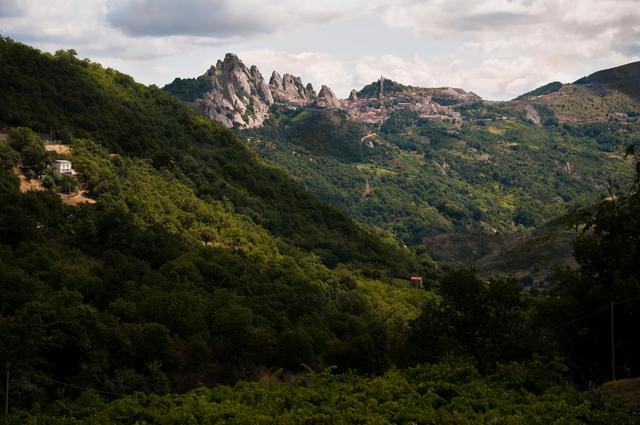Monte Cognato
All the PlacesIn the heart of Basilicata, spanning almost 30,000 hectares across the provinces of Potenza and Matera, lies the Gallipoli Cognato Piccole Dolomiti Lucane Regional Natural Park. Established in 1997, it is best known for its spectacular sharp dolomitic formations, upon which historic centres cling—most notably those of Castelmezzano and Pietrapertosa, connected by the famous ‘Flight of the Angel’.
The park’s area is almost entirely covered by the Gallipoli Cognato Forest and the Montepiano Wood, which is home to majestic specimens of Turkey oak, fragrant linden trees, wild pear and apple trees, maples, alders, and the rare holly. At lower altitudes, Mediterranean scrubland prevails. In spring, visitors are enchanted by the striking display of blooming cyclamens, anemones, and violets.
The variety of vegetation in the Gallipoli Cognato Regional Park is matched by a diversity of wildlife species. In addition to mammals such as wolves, badgers, porcupines, wildcats, and wild boar, the park is home to amphibians including the Italian newt and the spectacled salamander. The black stork nests here, and it is common to observe several large birds of prey in flight, such as the peregrine falcon, buzzard, and kite.
In the Legenda della vita del santo Guglielmo, there are numerous references to places and miracles, especially connected to Monte Cognato. Present-day toponymic traces lead us to the territory of the Gallipoli Cognato Piccole Dolomiti Lucane Regional Park in Basilicata; in particular, at Palazzo, in the municipality of Accettura (Mt), high in the woods of Gallipoli Cognato, important remains and settings of an 11th-century Basilian monastic settlement can be found, which later passed to the Benedictine nuns. According to the park’s description, around 1123 this place hosted Saint Guglielmo. Here, at Gallipolis (Accettura), he founded a church (Santa Chiara) and the adjoining Monastery of S. Maria di Serracognata, which later came under the Clarisse order. Subsequently, after the unification of Italy, the complex passed into state ownership. The old monastery garden now houses the botanical garden.
